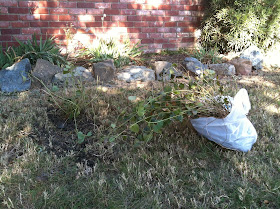I've posted before about things to know before buying a half or quarter. But often the next questions is how much beef do you get in that order? It has taken me ages, but I finally took the time to photograph and document a quarter of beef (this is also called a split side of beef). I rarely open my customer's boxes, but since this customer runs this blog, I figured it would be ok. :) So, this is what the quarter of beef for Sarah looks like. She and Michael customized their order based on their cooking style, the fact that summer BBQ season is almost here and the fact that there will be an infant keeping them busy very soon.
This is how their quarter broke down by weight of the individual cuts:
Filet Mignon - 2.64 lbs
Top Sirloin - 7.56 lbs
Rib Eye Steak, boneless - 6.1 lbs
New York Strip Steak - 6.09 lbs
Flat Iron Steaks - 2.56 lbs
Tri Tip - 2.55 lbs
Sirloin Tip Steaks - 3.24 lbs
Cross Rib Steak - 3.48 lbs
Carne Asada - 5.49 lbs
Chuck Roast - 7.88 lbs
Rump Roast - 3.1 lbs
Fajita Strips - 3 lbs
Ground Beef - 65 lbs of ground beef.
*Note that most people won't usually get that much ground beef but with a baby arriving soon, we kept it simple for them. They could have kept briskets as roasts, shanks as roasts and another roast from the round to have more roasts and less ground beef.
So they ended up with just over 53 lbs of cuts and 65 lbs of ground beef for 118 total pounds. That is actually pretty heavy for a split half or quarter of beef. 90-100 lbs is more common, this just happened to be a big steer.
This is what their ground beef looks like, all in one pound packages.
Next is the line up of "higher end" steaks - filets in the front, rib eyes next, New Yorks behind and lastly the top sirloin steaks. The steaks are all packaged two to a package and all are 1 1/4 inches thick, standard for us.
Below are the tri tip, sirloin tip, cross rib steak and flat iron steaks. These are all great on the BBQ. A cross rib steak and sirloin tip steak both do well with a marinade, quick BBQ and served no more than medium. Note that there is no flank or skirt steak. Since there is only one tri tip, one skirt steak and one flank steak per side of beef, we divide these as equally as possible between the two quarters - one get the tri tip and the other the flank and skirt steak.
Finally we have the roasts. In the back - or top of the photo are the rump roasts and chuck roasts. The Chuck roast is the fattest of the roasts but very, very flavorful and super easy to 'set and forget' in the crockpot. Below those are the carne asada and at the bottom are the fajita strips.






















